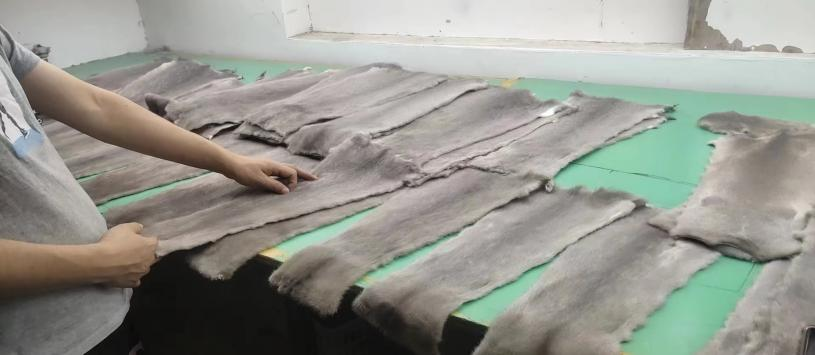How To Make Furs A Ready-to-wear Clothing(One)
Last time we introduced how to make raw fur into a finished one, which can be the material to make a fur coat. So this time, we will show some crucial steps during clothing-making procedures.
Last time we introduced how to make raw fur into a finished one, which can be the material to make a fur coat. So this time, Emay will show some crucial steps during clothing-making procedures.
There are mainly eight steps to making fur clothing:
Make a paper pattern, match the pelts, operate on the platform, cut furs according to the paper pattern, use the machine to stitch the finished garment pieces, make the inner lining, handsewn, and final inspection.
Let's start with the first three steps one by one! If you have any interests, the content below won’t waste your time!
1. Making a paper pattern.
The first step is to design and sketch the drawings, input them into the computer, perform typesetting, sorting, and finally print them out.
2. Matching the pelts.

First, take out the paper sample, lay it on the operating table, and flatten it. Then put the prepared pelts on top of the paper pattern and arrange them neatly in order. It is done to make full use of the usable area of each fur, to match reasonably, and to reduce material consumption. From this, we can calculate approximately how many furs are needed for a coat.
Next, the skins were placed on the table, then they were picked. When picking furs, one needs to look at the color and the luster. It is also necessary to ensure that the fluff is fine and even, with no problems of hair loss, degradation, and no odor.
3. Operating on the platform.
Collect the mink fur that has been prepared and send it to the operation platform together with the paper pattern. Simply put, it is the primary finishing of the pelts, so the fur is more in line with the requirements of making clothes. This step also includes several parts called Fangdao, Chepi, Bapi, Pinshan, Dingyi, Tangmao, and Jianmao.

•Fangdao:
It is a method of cutting the leather that is not long enough and then splicing it to make the leather longer as a whole.
•Chepi:
Using a knife, cut the connected strips of the pelt, then using the sewing machine, move one small strip down and sew it together with the middle part, then sew the other strip together with the first one.
•Bapi:
When operating, be sure to operate continuously, without interruptions, or the skin will retract. During the process, water should be sprayed, which can make the dry skin moist and elastic, which is conducive to the elongation and stretching of the mink fur. This step is to flatten the seam.
•Pinshan:
According to the alignment line, sew each piece of the finished garment together, splicing well, and pay attention to the tightness when splicing. The other pieces are spliced together in the same way, so the coat is roughly complete.
•Dingyi:
It is to put together the garment and nail it to the board according to the painted pattern so that the garment can be shaped easily.
•Tangmao:
First start the scalding machine, wait for the temperature to reach above 120 ℃, and start scalding, until the hair is soft and smooth, and then cut the hair after it is ironed.
•Jianmao:
Before cutting, adjust the machine scale according to the length of the fur needed to be cut, start the machine and begin to cut the hair. When shearing, make sure to move the mink fur slowly to avoid damage. This will make the fur smoother and more flat.
So that’s it. As a professional manufacturer of fur clothing, looking forward to your inquiry about wholesale fur coat or other fur garment in bulk!
To find out the next five steps to making fur clothing, stay tuned to Emay blog!